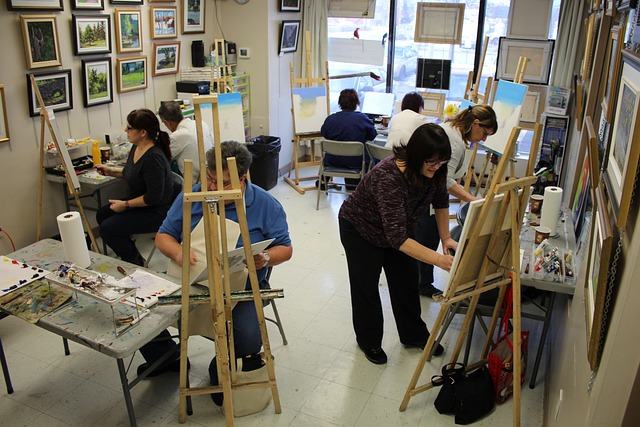Art & Design Degrees: Programs, Skills, and Career Paths
Art and design degrees cover a wide range of study areas, from studio fine arts to applied visual communication. These programs teach technical skills, critical thinking, and portfolio development while exposing students to historical and contemporary practices. Whether you aim for a career in graphic design, gallery work, education, or freelance practice, a degree can structure learning and provide access to faculty, workshops, and local services that support professional growth.

Art: What can degree study in art include?
A degree in art typically balances studio practice with art history and theory. Coursework can include drawing, painting, sculpture, printmaking, and digital media, along with seminars on criticism and aesthetics. Many programs emphasize portfolio development, exhibition opportunities, and critiques that help students refine concept and technique. Studio time, access to specialized equipment, and mentorship from faculty are common, and students often engage with community projects or internships to gain real-world experience.
Design: How do design degrees vary by focus?
Design degrees span disciplines such as industrial design, interaction design, interior design, and graphic design. Programs differ by emphasis: some prioritize human-centered methods and user research, others center on material processes and manufacturing, while communication-focused tracks stress typography, layout, and branding. Coursework usually includes project-based studios, design theory, and collaborative work. Electives or minors allow cross-disciplinary study, helping students combine design thinking with business, technology, or fine art.
Education: Which pathways lead to art and design degrees?
Education pathways include associate’s, bachelor’s, and graduate degrees (MA, MFA, or professional master’s). Community colleges and vocational schools offer associate programs that prepare students for entry-level roles or transfer to four-year institutions. Bachelor’s programs provide broader theoretical and practical foundations; MFAs typically serve as terminal professional degrees emphasizing advanced practice and research. Students can also pursue certificates, continuing education, and online courses, and may connect with local services such as community studios, maker spaces, and internship placements to supplement formal study.
Creativity: How do programs build creative skills?
Degree programs develop creativity through iterative projects, critique cycles, and exposure to diverse media. Assignments often challenge students to research, prototype, and revise ideas while integrating feedback from peers and instructors. Courses teach problem-framing, visual literacy, and methods for generating and testing concepts. Technical training in software, fabrication, or traditional craft provides tools for execution, while seminars in art history and contemporary practice expand contextual understanding. Collaborative studios foster communication and adaptability—skills essential for creative work across sectors.
Graphic design: Careers and practical skills
Graphic design programs focus on visual communication, teaching typography, branding, layout, motion graphics, and digital tools like vector and raster editors. Students learn to translate messages into clear, effective visuals for print and digital platforms. Career options include in-house design teams, agencies, freelance practice, UX/UI roles, and work with local services such as marketing firms or nonprofit communications. Portfolios and internships are critical for employment; many programs include capstone projects or client-based assignments to produce tangible work samples that demonstrate problem-solving and technical proficiency.
Conclusion
Choosing an art or design degree involves considering your preferred discipline, the balance between theory and practice, and the type of credential that aligns with your career goals. Look for programs that provide structured studio time, access to equipment, mentorship, and opportunities for real-world projects and internships. Complement formal education with community resources, workshops, and freelance or volunteer projects to broaden experience. A degree can offer a foundation in craft, critical thinking, and portfolio development that supports a range of creative careers across industries.






